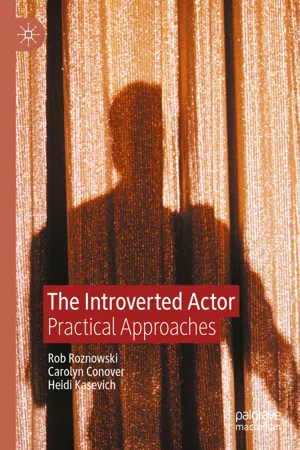Origins and Definitions: Pressure to “Act Like an Extrovert”
Popular ideas concerning introversion and extroversion in twenty-first-century America are misleading. Oversimplification weakens the foundation of an understanding of our inborn temperaments. Common-sense/everyday notions of introverts in Western culture tend to have negative associations, including “slow,” “passive,” “unadventurous,” “antisocial,” and “loner.” The extrovert, on the other hand, is seen as “dynamic,” “alpha,” “outgoing,” “bold,” and “charismatic.” According to such popular notions, the former is not destined for leadership, but the latter shall rule our political—and theatrical—stages.
The pressure to “act like an extrovert” is real, and in many of our classrooms in America today, educators inadvertently set up conditions where extroverts can thrive, but introverts are left to try to act like extroverts in order to succeed. For instance, educators often define “participation” as quantity of speech, assigning a grade to the number of times students raise their hands in our classes. A teacher might pause just a few seconds before calling on students, and tell the more reserved to “come out of your shell.” Under these conditions, extroverts are at an advantage because they tend to process information quickly. Introversion expert Lisa Kaenzig confesses: “People like me [an extrovert] are rewarded for being able to think quickly on their feet . . . [be] the first one to put their hands up, the one who can have a quick and witty response in a debate or in classroom discussion.”1 Students with just a few close, meaningful friendships are encouraged to branch out and have a larger group of friends. As one student interviewed said, “You’re expected to be doing something or going somewhere and are discouraged from spending time alone.” And the educators themselves? Michael Godsey in “Why Introverted Teachers Are Burning Out” (2016) cites a study that shows 41% of teachers leave the profession within five years of entering it, a statistic associated with an emphasis on constant social interaction.2 This pressure can take its toll on introverted students and teachers alike.
In their communities, introverted students are often shamed into feeling less than their extroverted peers, who are more likely to enjoy group work, crowded cafeterias, endless socializing, classroom discussions, and reward-motivated activities. They are often discouraged from spending time alone and reflecting, and made to feel “abnormal” for eating by themselves, staying in on a Saturday night, or even reading a book. These feelings can have further negative repercussions on their health, including lower self-esteem, stress, and anxiety. When they discover they fall on the introverted side of the spectrum, introverted students all too often lose confidence in their ability to lead.
It is not just our schools. Our workplaces tend to be crowded, noisy places, where the walls have come down, so it can be hard to find a place for privacy. Contemporary open office plans are designed to maximize the social experience: pods, hubs, and common spaces have replaced privacy areas and cubicles. Research assignments are merged with group projects and presentations, and there is an expectation for constant social and public interactions: meetings, brainstorming sessions, and even, in some parts of the country, games of ping-pong.
Why? The Origins of an Extroverted “Culture of Personality”
Many of the misconceptions surrounding introverts, at least in America, stem from a long history of valuing and expecting a specific kind of personality necessary for leadership, entertainment, success, and even happiness. In Quiet: The Power of Introverts in a World That Can’t Stop Talking (Crown Publishing Group, 2012), Susan Cain connects the “extrovert ideal” in American culture—charming, charismatic, outgoing, action-oriented people who can talk to anyone—to the rise of the industrial and media ages, where it was often believed that you couldn’t succeed in life unless you were a fast-talking salesman.3 Cain relies on the groundbreaking research of cultural historian Warren Susman, who notes in Culture as History (Smithsonian, 1984) that as America began to shift from a nation of producers to one of consumers, collective ideas about the ideal self began to shift, too.4 “Personality” replaced “character,” and with this shift came an emphasis on cultivating an entertaining and bold personality so as to impress bosses and friends alike: self-sacrifice was replaced with self-expression; the work ethic with the leisure ethic; integrity with charm.
The charming traveling salesman had his counterpart in the dynamic actor, a larger-than-life personality who used his charisma in show business; the bright and bubbly actor was expected to constantly make a good impression and charm others with quick wit and a glitzy ability to think on their feet. Joanne Magee, theatre director at Little Red School House & Elisableth Irwin High School (LREI), maintains that it was during the vaudeville era that America witnessed the rise of the actor as a charismatic extrovert who was “supposed to come out to sing and dance … working hard to be a persona...
